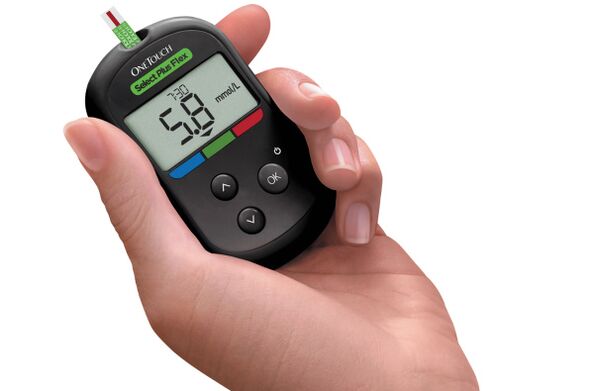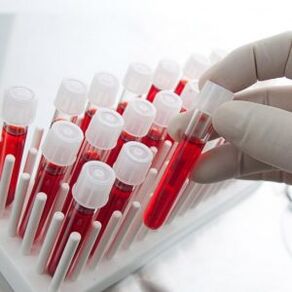
The symptoms of diabetes are a number of clinical manifestations of specifics for a certain disease that indicates doctors and patients to appear or progress the pathological process.
Diabetes mellitus is considered one of the most common diseases in the world that have already suffered 350 million people all over the world. According to statistics, the number of cases increased by more than ten times in just two decades. About 90% of these people - diabetes of the second type.
If you identify the pathology in the initial phases, you can avoid a large number of serious complications. For this reason, it is so important to know what indicates the beginning of the disease and how a person has to be examined in order to control this severe endocrine pathology.
Manifestations of diabetes do not depend on his type. The human body can understand if a sufficient level of energy from the glucose necessary in this case stops in the results of a violation of its metabolism, and it remains plentiful in the bloodstream and causes enormous irreversible damage to systems and organs. The metabolic processes disturbed in the body are provided by a lack of insulin, which is responsible for the process of glucose metabolism. However, the characteristics of the pathogenesis of diabetes of the first and second types show significant differences, so that it is necessary to know exactly the symptoms of each of them.
The main symptoms
The lack of insulin in the blood or a decrease in the sensitivity of insulin -dependent cells compared to the effect of insulin in the body leads to a high glucose concentration in the blood. In addition to this symptom, which is considered the main diabetes, there are other signs that are found during the medical observation of the patient. If the slightest suspicion of the presence of this disease occurs, it is worth looking for medical help, as diseases discovered early on and even children of school age suffer from diabetes in the modern world.
The first manifestations

The doctors are the first manifestations of diabetes to call a number of specific symptoms. In diabetes, patients always have polyuria due to glycemia and glucose level in urine - fast and plenty of urine. It is glucosuria that is the cause that prevents the absorption of liquid by kidney structures. Polyuria is always accompanied by a thirst in which a person can consume up to 10 liters of liquid per day.
Despite the consumption of so many liquids, there is always a feeling of dry mouth. In the case of diabetes of the second type, a feeling of constant hunger appears together with thirst. This is due to the fact that the insulin produced by the pancreas in large quantities is circulated in the blood and is not used according to its purpose gives the brain the feeling of hunger.
A high level of glycemia causes the body to damage. Damage to the nerve fibers lead to diabetic polyneuropathy. The first sign of such a complication is the deafness of the fingers of the feet and hands and the occurrence of a severe pain in the limbs. If you act in the blood in time at the level of glucose, the development of this process can stop and pain syndrome, if you do not stop at all, cannot be stopped. However, if you miss the beginning of the progress of the pathology, you can wait for very serious consequences - severe pain, innervation, trophic ulcers and other things.
With a high glycemia of the eyes of the eyes, diabetic angiopathy develops. Clinically, the disease initially manifests itself through a feeling of the cloud pen with a high glucose concentration in the blood, and then a decrease in visual acuity and even complete blindness in the absence of therapy. The appearance of one of the above symptoms and all the more as its complex, the patient should urgently be examined in order to recognize insulin insufficiency.
External manifestations
There are also those that indicate the occurrence of insulin resistance and high glycemia among the external signs. For example, such a symptom can be a sharp development of dry skin, itching and peeling. It is particularly important to pay attention to such skin manifestations against the background of the accompanying thirst. Even in diabetes, the itching occurs very often due to the irritating effect of the glucose contained in the urine on mucous membranes. There is no discharge at the same time, which is a characteristic feature of diabetes.
In addition, a sharp weight loss is a signal for the insertion of diabetes of the first type. In this case, it is necessary to observe some other symptoms of pathology in order not to draw any hasty conclusions. Obesity and excessive body weight are not a symptom of diabetes of the second type, but can act as its cause. If the weight of a person quickly changes in every direction, it is worth considering and taking an exam by a doctor.
Symptoms of diabetes
The first type

The first type diabetes is very quick in its development. He has his own specific manifestations that should be paid.
The patient has an increased appetite in his history, but he only loses exhausted, suffers from sleepiness. Frequent urge do not let the toilet sleep calmly at night and force them to get up several times. The amount of urine in this case increases significantly because the feeling of thirst is progressing.
Such symptoms cannot remain unnoticed because it occurs very sharply and suddenly occurs. It is accompanied by nausea, vomiting and severe irritability. It is particularly important to pay attention to the constant urge of the toilet in children at night if this was not observed beforehand.
The main problem of diabetes of the first type is the fact that the glucose level can also increase the blood and decrease very much. Both conditions are dangerous for health and have their own characteristics and manifestations that have to be carefully monitored.
The second type
The second type of diabetes is most common. His manifestations are very diverse, they appear gradually, so it is difficult to catch and recognize them immediately. Slight symptoms usually do not lead to a person who discovered at home immediately suffer the alarm.
The second type of diabetes is characterized by the occurrence of dry mouth, thirst, abundant urination, weight loss, fatigue, weakness and sleepiness. A characteristic of this diversity of disease in the early stages is the presence of tingling in the fingers and the deafness of the limbs, hypertonic manifestations, the occurrence of infectious processes in the urine system. Similarly, the patient's first type of diabetes can be disturbed by nausea and vomiting, dryness and itching of the skin and skin infections.
It is important to remember that the gradual development of symptoms leads to the development of the disease itself. Diabetes in the later stadiums are subject to hyperosmolar komlar, lactoacidosis, ketoacidosis and hypoglycemia, which can gain dynamics in a few hours and even lead to the patient's death. Due to advanced diabetes, patients often have serious visual problems, which then leads to complete blindness, kidney or heart failure, pathology of the vascular and nervous system.
During pregnancy

Diabetes pregnancy sugar rarely manifests itself through certain external signs. Most of the time, his presence is found with planned examinations that are carried out regularly to pregnant women. The main indicators are data from blood and urine tests.
In the presence of external signs of the type of pregnancy of diseases, they are very similar to all of the symptoms of diabetes of the first two types - nausea, vomiting, weakness, thirst, infection in the genitourius system are not separate signs of toxicosis and other pathologists, but show in the second and third trimon of pregnancy of pregnancy of evestation of the Grüche.
The pregnancy form of the pathology of direct threat to the life of a mother or child does not bear, but can influence the general course of pregnancy, the borehole of the future mother and the fetus.
The high blood content in glucose leads to the birth of a baby with a high weight (more than 4 kilograms), which will be a prerequisite for its obesity or incidence of diabetes at any age in the future. A delay in the development of the child, hypoglycemia, jaundice on the first pores of the life of the newborn can also be manifested.
Signs of complications
diabetic
The diabetic foot in medicine is understood as a comprehensive anatomical and functional change in tissues of the distal parts of the lower extremities in patients with diabetes. This is the most impressive complication of pathological pathology, which often leads to gangrene, amputation of the limbs and disabilities.

If there is a prehistory of diabetes in the health state of the legs, they must be monitored very carefully. There are three main forms of diabetic foot: neuropathic (prevailing nerve damage), ischemic (prevailing lesion of blood vessels and blood flow disorder).
Among the symptoms of patients who take the diabetic foot in front of the devilish foot, specialists differentiate unpleasant feelings, burning and sewing sensations in the legs, goosebumps, a feeling of current discharge. When such symptoms disappear when walking, this shows the beginning of the development of the neuropathic form of diabetic foot. It is also important to become attentive if the sensitivity disappears regularly. If painful sensations occur directly when walking or at night (you can only insure by laying the limbs from the bed edge), this means the beginning of the development of the ischemic form of the diabetic foot, which is referred to as the "ischemic foot".
Among the Signs Indicating The Start of the Development of the Diabetic Foot, Experts Distinguish the Skin on the Legs Or the Occurrence of Pigment Spots, Peeling and Dry Skin in This Zone, The Occurrence of Multi -Caliber Bubbles on the Skin with Transparent OccurringCorncles, cracks between the fingers, deformation of the nail plates on the legs, Thicking of the Skin Kernels, spontaneous fractures of small bones on the legs. If a person notices at least a few such signs, they should urgently seek medical help.
Sign of retinopathy
The diabetic ophthalmology manifests itself by changing the blood vessels in the retina, which leads to a violation of the microcirculation in IT. Such a violation leads to diabetic retinopathy. Such a complication gradually develops and even in the later phases it can be almost invisible to one person.
The main signs of diabetic retinopathy are:
- the emergence of "flying" in front of the eyes;
- Various seeing;
- Acceptance of visual acuity in the later stages;
- Bleeding in the vitreous and in the retina.
In this case, diabetic ophthalmology can manifest itself through two main shapes -not -phheret (background) or retinal proliferative retina. With background -Retinopathy, pathological concerns, first the retina itself. In the event of violations in the capillary vessels of the retina, bleeding, retirement and deposits of metabolic products occur. Background Retinopathy is characteristic of older patients with diabetes. It provokes a gradual decrease in visual acuity.
Based on the background, the proliferative retinopathy develops when the OSIGAL support is increasing. In this case, there is a pathological formation of new blood vessels that sprout from the retina into a vitreous. This process leads to bleeding in a vitreous and a sharp progression of vision in one person and an irreversible blindness. In adolescence, such a complication transfer from one form to another in a few months can occur, then the retinal detachment and complete vision loss will follow.
Sign of encephalopathy

Due to diffuse degenerative damage to the brain, diabetic encephalopathy occurs as a complication of diabetes. The prevalence of encephalopathy depends directly on the type of diabetes and their symptoms - in the duration of the course of the disease and its severity. It belongs to late complications and manifests itself 10-15 years after the manifestation of diabetes.
The immediate cause of the development of encephalopathy is the metabolic disorders typical of diabetes, which lead to brain tissue and blood vessels. The above processes lead to a violation of brain activity, a decrease in cognitive functions. The development of encephalopathy occurs very slowly, which leads to difficulty to recognize its symptoms in the early stages.
The main symptoms of diabetic encephalopathy are:
- Headache and dizziness;
- Emotional instability, high fatigue, sleep disorders and other neurasthenic disorders;
- Instability of human gait;
- The bifurcation of objects, when you look at them, the fog of seeing, flickering the "flying" in front of the eyes;
- intellectual, depressive disorders;
- confused awareness;
- Determination of mental activity, memory, ability to concentrate;
- Lines, temporary ischemic attacks, other pathologies of the brain cycle;
- The occurrence of seizures.
There is practically no complication from the clinic in the initial phase, and the symptoms begin with the development of encephalopathy. The symptoms are identical to both types of diabetes.
Frequent diabetes satellites are atherosclerosis, arterial hypertension and obesity. In connection with the pride of blood vessels in the event of atherosclerosis, the risk of ischemic strokes and heart attacks increases. In the event of a violation of the microcirculation in the kidney vessels, an irreversible kidney failure occurs, which ultimately leads to a complete termination of the function of the kidneys. This in turn leads to the need for replacement therapy for kidney failure using the method of lifelong dialysis.
Diabetic coma
Diabetic cat means a serious impairment of the metabolic processes in the body of a patient who suffers from diabetes. A coma can occur with a strong increase as well as with a strong decrease in human blood sugar.
This disease requires urgent medical care, since serious complications and even deaths are possible in absence.

A coma develops in phases, but pretty quickly. The first sign of a confluence in which a fictional state can be, the rapid growth of blood sugar, nausea and vomiting, sleepiness, pain in the abdomen per day or more before the immediate coma. Another symptom of the diabetic coma can be the sharp smell of acetone from the patient's mouth. Sensitivity can also occur in cramps, thirst, thirst.
With a hypoglycemic coma, the sugar concentration in the blood decreases significantly. The indicator can achieve the marking of 2, 5 mmol per liter and below. On the obvious symptoms of such a coma, unreasonable fear, fear of the patient, a feeling of weakness, cramps, blood pressure cases and loss of consciousness. The forerunners of the occurrence of a hypoglycemic coma can be:
- general malaise;
- Lack of appetite;
- Diarrhea or constipation;
- Dizziness, headache, tachycardia.
A lack of support in this state can lead to extremely serious consequences. Since the hypoglycemic coma develops rapidly, the delivered support should be urgent.
A sharp decrease in blood pressure in the patient, weakening the impulse and the softness of the eyeballs can indicate a strong decrease in blood pressure. Only a qualified doctor can put a person in this state in their sense, so that the ambulance should follow as soon as possible.
Laboratory sign

You can only reliably find out the diagnosis of the patient after all the necessary laboratory tests. All laboratory tests for diabetes target the determination of blood sugar indicators.
It is possible to accidentally identify sugar in the blood with mass examinations of a person before hospitalization or with an emergency determination of other indicators.
The most common is a blood test for sugar on an empty stomach. Nothing can be eaten for 8-12 hours before its delivery. In addition, you cannot drink alcohol and not smoke an hour before the blood donation. The level of up to 5, 5 mmol per liter is regarded as a normal indicator. If the indicator corresponds to 7 mmol per liter, the patient is sent to an additional examination. For this purpose, they are tested for glucose tolerance. For this purpose, the patient donates blood to an empty stomach, then he drinks a glass of water with sugar (75 grams for an adult for 200 milliliters of water), and 2 hours later he will carry out a blood test.
When the body is in normal condition, the first analysis shows the result of up to 5, 5 mmol per liter and the second - up to 7, 8 mmol per liter. If the indicators are in the area, 5, 5-6, 7 or 7, 8-11, 1 mmol per liter will be informed of the doctors about the development of pre-antiabet in the patient. Indicators that exceed these numbers indicate diabetes.
It is also common to carry out a study of glycated hemoglobin that shows the average value of human glucose in the last 3 months of life. The standard is the indicator below 5, 7%. If the value is between 5, 7 and 6, 4%, this indicates that there is a risk of type 2 diabetes mellitus. In this case, measures should be discussed with the doctor to reduce such a risk. If the level of the glycated hemoglobin is more than 6, 5%, the diagnosis of diabetes is likely, but it requires confirmation. The recommended level of glycated hemoglobin in people with diabetes is less than 7%. If this level is higher, it is necessary to discuss the situation with your legal doctor. It should be taken into account that the degree of glycated hemoglobin can be estimated as optimal by the doctor.
Symptoms of a child
Diabetes can manifest itself at any age, including the early children. Even diabetes of newborns are found. This is a rare case of a innate type of disease. Most of the time, the manifestation in children is 6-12 years. The metabolic processes in children during this time run much faster, and the condition of the non -shaped nervous system can influence the glucose level in the blood. The younger the baby, the more complicated to diabetes.
The doctors differ in the main symptoms that parents have to pay attention to in order not to miss the development of diabetes in children:
- Thirst and dry mouth;
- Nausea with vomiting;
- frequent urination with the stickiness of the urine;
- Weight loss and high appetite at the same time;
- A drop of visual acuity;
- High fatigue, weakness and irritability.
If a child has at least one of the above symptoms, this is a reason for the search for a doctor. If several symptoms are found, a doctor should be immediately.
Typical and atypical signs of diabetes can also occur in symptoms in children. The doctors attribute typical symptoms, which the parents of the children often with age -related urinary incontinence, polydipsia, polyphagic, dry and itchy skin, the itching of the genitals after urination, is in the tested bleeding tests. A timely diagnosis in the event of suspicion helps to identify the disease at an early stage and to start the required therapy, which means that no complications can be developed.
Determination of diabetes mellitus at home
The course of diabetes can be absolutely asymptomatic. It can be identified by chance if you visit an optician or another doctor. However, there are many signs where the presence of pathology can be guessed independently. In addition, you can precisely define the type of disease at home.
With a healthy body, the sugar level rise after eating in the blood. After 2-3 hours later, this indicator should return to its original limits. If this does not happen, a person has a number of symptoms that cannot be noticed. This is already considered a dry mouth, thirst, very common and abundant urination, increased appetite, apathy, cramps, fog of consciousness. Gradually, a person notices the dryness of the skin that did not manifest.
You can also suspect the appearance of diabetes at home to various strange sensations that a person has not observed before. In the second type of diabetes, this is a poor healing of wounds and scratches, the development of obesity. In the first type of pathology, on the contrary, a person can lose weight, even though the appetite is quite high. In all types of diseases, itching can occur, increased hair growth on the face, the formation of Xanth (small yellow growth on the skin), hair loss on the limbs and others.
The timely identification of signs of diabetes should cause a doctor.
Only if you start therapy for diabetes in the early stages can we hope for compensation for the disease and the normal quality of life in the future.


























